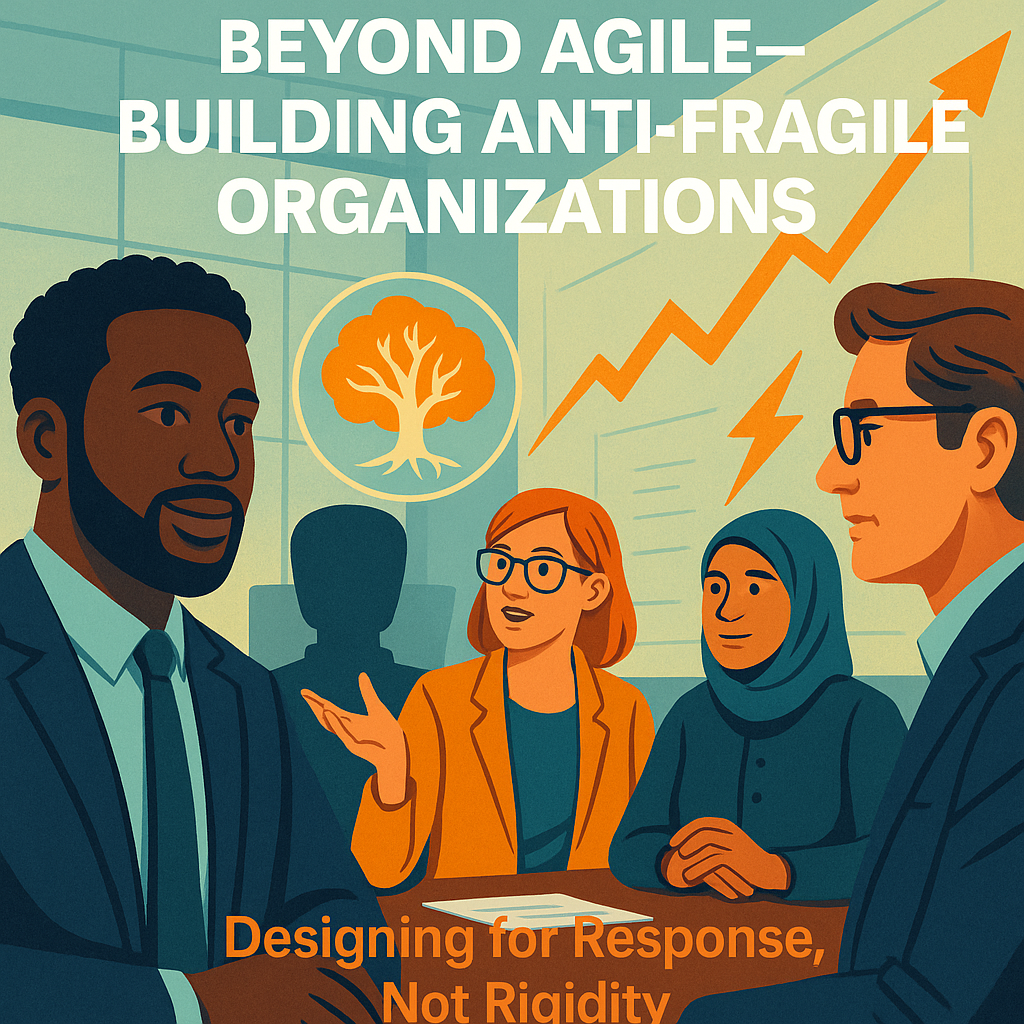Agility has become one of the most overused — and misunderstood — words in organizational vocabulary. Nearly every organization today claims to be “agile,” but beneath the surface, many still operate with rigid planning cycles, slow approvals, and top-down decision-making. The structure may wear a lean façade, but the behaviors echo traditional waterfall.
True adaptability, however, is not about velocity alone — it’s about resilience under pressure. Nassim Taleb popularized the concept of being “anti-fragile”: systems that don’t just survive stress, but actually get stronger because of it. In a world marked by volatility, ambiguity, and discontinuous change, anti-fragility may be a better target than agility.
For the consultant in our case study, the core challenge was helping clients evolve into systems that could learn and thrive amid stress. This meant shifting away from performative agility — checklists, ceremonies, and jargon — and toward deeply embedded learning loops, distributed authority, and environments safe enough for genuine experimentation.
The Problem with Performative Agility
Agile frameworks, in their original intent, were powerful. But over time, they’ve been bureaucratized. When organizations implement agile as a compliance exercise — without altering underlying mindsets — they create surface-level change without adaptive capacity. The outcomes?
- Teams going through the motions without real ownership.
- Decision bottlenecks that undermine responsiveness.
- Fear of failure disguised as “risk management.”
Agility that fears discomfort is not agility — it’s inertia with a new name.
Designing for Anti-Fragility
To build truly adaptive systems, the consultant advocated for three interdependent moves:
- Learning Loops at Every Level: Rather than postmortems at the end of a project, real-time reflection becomes a norm. Daily, weekly, and project-based learning rituals are institutionalized — not to assign blame, but to harvest insights.
- Distributed Decision-Making: Authority isn’t hoarded — it’s shared. Teams closest to the work are empowered to act, make calls, and respond to emerging information. This isn’t chaos — it’s clarity, enabled by shared principles.
- Safe-to-Fail Experimentation: Innovation only flourishes when people can try, learn, and iterate without fear. By normalizing small bets, low-risk pilots, and feedback-driven design, the system becomes more intelligent with each iteration.
Measuring the Right Things
Traditional metrics favor predictability: time, budget, milestones. But anti-fragile systems prioritize adaptability:
- How quickly can we learn?
- How broadly is authority distributed?
- How safe do people feel raising uncomfortable truths?
By shifting metrics from control to capability, the organization no longer optimizes for stability — it builds for evolution.
Industry 5.0: Resilience Over Rigidity
Industry 5.0 reframes the transformation conversation. It reminds us that high-functioning systems aren’t those with perfect plans, but those with the capacity to respond, reconfigure, and regenerate in the face of change. This is especially critical in tightly governed industries like finance, healthcare, and infrastructure — where the margin for error is thin, but the need for agility is growing.
The consultant’s greatest value? Helping clients see that anti-fragility isn’t an abstract theory. It’s a design principle. One that allows even legacy institutions to become adaptive powerhouses — not despite their governance, but through better alignment of people, process, and purpose.
Part 5 will explore the next frontier: how to build for the unknown, creating organizational cultures that are not only future-ready, but future-making.
